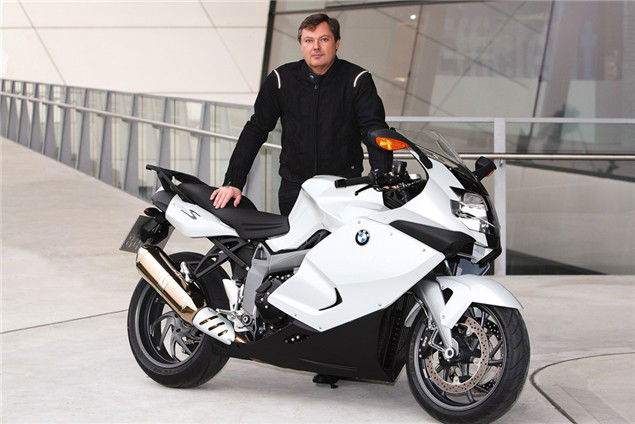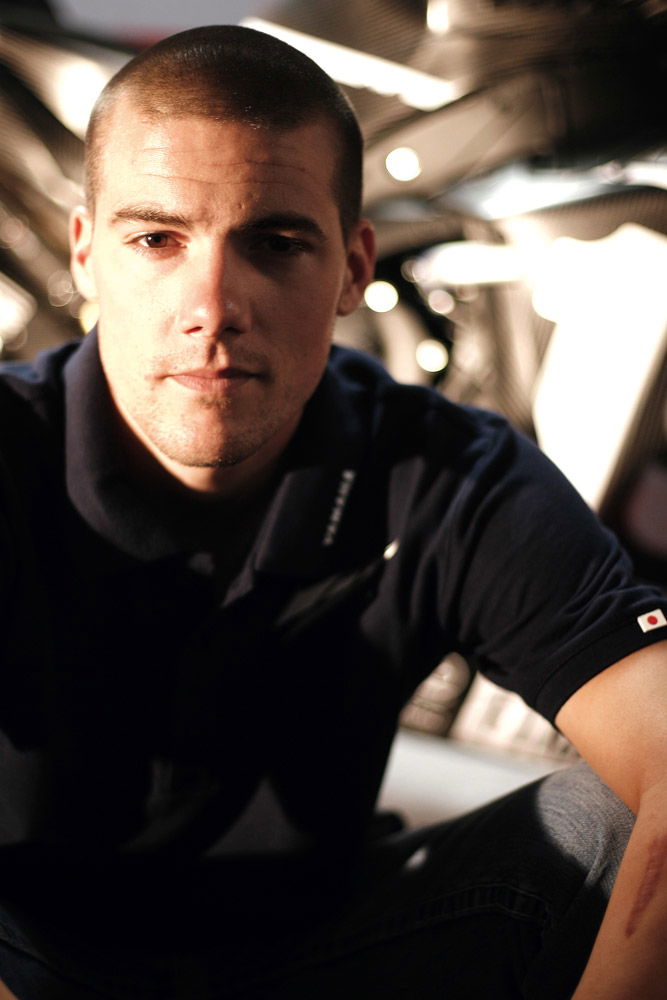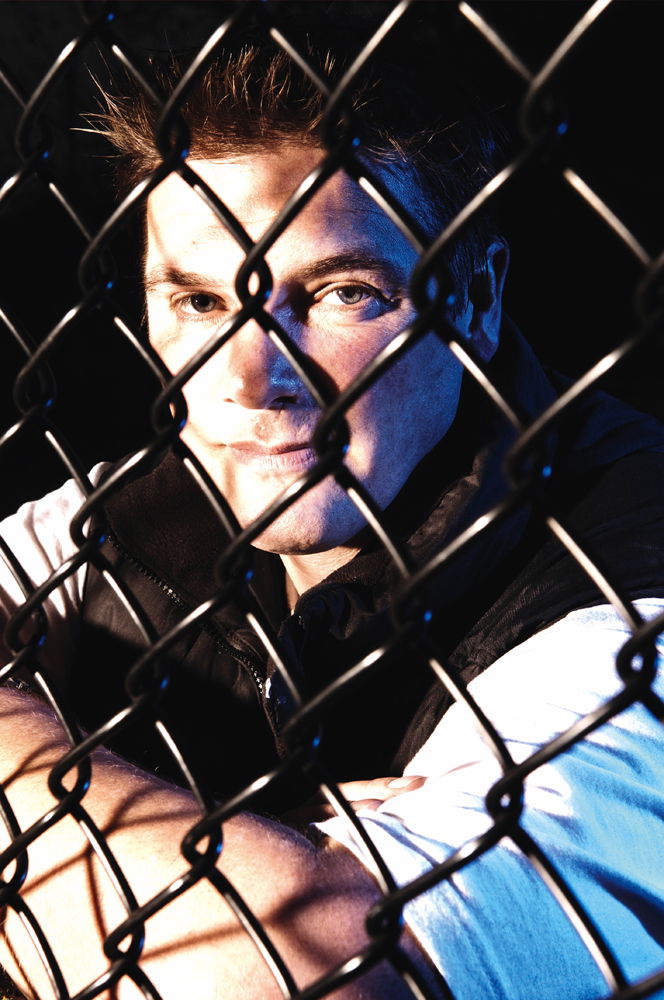The Interview - Christian Landerl
BMW new model guru Dr (he’s a real doctor) Christian Landerl on building a world-beating superbike, why a 600cc version is inevitable and why the Nu¨rburgring is in his blood...


THAT THE S1000RR SUPERBIKE HAS PROVED TO BE FAST IN WSB IS NO SURPRISE TO US
“The result at Phillip Island was an excellent start and showed the potential of the S1000RR. A victory in our first World Superbike season would be fantastic but we have no experience in this series and we have to keep our goals realistic. We want to take a number of Top 10 positions and to quickly erode the distance between us and the top teams. With Troy Corser and Ruben Xaus we have the ideal rider pairing – their years of experience will be very valuable in the early phase.”
BUILDING A COMPETITIVE SUPERBIKE HASN’T BEEN EASY
“Every new project has its highs and lows, and with S1000RR the great challenge for us was to develop a superbike that was able right from the start to keep up with the best competition motorcycles in the world. We were quite sure that as latecomers to this segment we would be able to turn out a motorcycle fully able to look the competition in the eye. It is not only the bike’s power which is of a superior level but also its handling ability.”
IN SUPERBIKES A FOUR-CYLINDER ENGINE IS THE BEST SOLUTION, IF NOT THE MOST ORIGINAL
“Our superbike was based on the most suitable basic concept. The decision was made on the basis of a number of very precise analyses, both of the chassis and the engine. For instance, in the early phase of the project, we looked at a number of different engine designs. The in-line four cylinder proved to be by far the best at fulfilling the requirements in terms of power, weight and package.”
EVEN AT BMW, CONVENTIONAL TELESCOPIC FORKS HAVE THEIR ADVANTAGES...
“Every suspension design has its advantages and disadvantages. Duolever (BMW’s telelever front end debuted on the K1200S) set new standards in the areas of comfort, braking stability and handling. But on the S1000RR we decided not to incorporate Duolever because we felt it didn’t fit into the package. The greater space requirements of this system would have been disadvantageous for the highly compact package of the BMW superbike. For example it would have restricted the supply of air to the airbox.”
WE DON’T NEED AN R1-STYLE CROSSPLANE CRANKSHAFT
“As everywhere, many roads lead to Rome, and this is true of motorcycle construction. Right now I see no further ways of improving the performance of our S1000RR.”
BMW HAS A HISTORY OF SUCCESS WITH SUPERCHARGING, BUT WE’RE NOT GOING TO BRING IT BACK FOR THE ROAD
“From a technical point of view, a motorcycle engine could employ the same kind of engineering as a car engine. But from a design point of view, the limits of usability, weight, package and cost will be reached very quickly. As far as a supercharger is concerned, I also see a problem in terms of efficiency – the engine first has to supply its drive power. For these reasons I see little future for this solution, whether for motorcycles or for cars.”
I HOPE WE WILL ONCE AGAIN RACE AT THE TT
“We have no plans for a factory entry but I hope there will be a few private riders who will ride the S1000RR in the TT next year.”
AN S600RR SPORTSBIKE IS ON ITS WAY!
“Around 200,000 sportsbikes of between 600cc and 1000cc are sold each year. We’ve now entered the segment with the S1000RR; the idea of a 600cc model is only logical from us.”
WORLD SUPERBIKE RACING IS ABOUT THE BIKES; MOTOGP IS NEARLY ALL ABOUT THE RIDERS
“As part of our long-term product strategy, we decided a few years ago to enter the superbike segment with the S1000RR. Viewed against this background, it only made sense that we should decide to concentrate on taking part in the World Superbike championship. In this international racing series, customers identify with the motorcycles, whereas in the Moto GP they tend to concentrate more on the riders.”
THERE’S A PLACE FOR TRACTION CONTROL IN RACING
“Anything that keeps the costs down in the field of motor racing is wise, if it doesn’t compromise either the sport or the rider’s safety. That said I think there’s a place for traction control on production-based race bikes.”
MOTORCYCLES ARE ABOUT TO GO THROUGH A RENAISSANCE
“The current trends in bike design are the increasing importance of active safety (ABS, traction control and stability control systems) and environmental protection. Safety remains important, which is why BMW will continue to place great emphasis on innovative control systems. The motorcycle has great future potential, although not only in the form in which we know it today.”
THE C1 (BMW’S WEIRD SCOOTER WITH A ROOF) WAS AHEAD OF ITS TIME
“The C1 was so far ahead of its time that there was no big market for it. It simply wasn’t compatible with the prevailing customer needs or market requirements. This is why we will consider exactly what customers want from their mobility in future before we hastily launch a completely new concept.”
MY FAVOURITE ROADS? THEY’RE A SECRET
“I am from Austria and the roads in the Austrian Alps are the most beautiful in Central Europe. They are easy to reach from Munich but I would rather not reveal which are my favourite runs!”
WE NO LONGER SPEED TEST ON THE AUTOBAHN
“It’s been a long time since we last used public roads like the autobahn for high-speed testing. We much prefer to use our own test areas and racetracks for these purposes.”
ISN’T EVERYONE A NÜRBURGRING FAN?
“Every race fan has to be a fan of the Nu¨rburgring. There are many challenging bends in the Green Hell, like the Planzgarten for instance. If you haven’t completely mastered your bike and don’t find the right line, you’re heading for trouble.”

